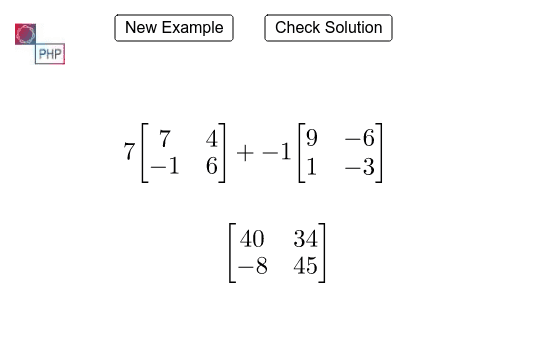


- MULTIPLY A SCALAR TO ONE VECTOR CODE HOW TO
- MULTIPLY A SCALAR TO ONE VECTOR CODE WINDOWS 10
- MULTIPLY A SCALAR TO ONE VECTOR CODE CODE
- MULTIPLY A SCALAR TO ONE VECTOR CODE PC
It is suggested to implement both illustrations on your system using a compilation tool and then make little changes to get a better understanding of python list multiplication by using scalars.So far, you have used the colon operator, :, for creating sequences from one number to another, and the c function for concatenating values and vectors to create longer vectors. The first illustration was all about using a single list however, we have used two lists in our second illustration. You can use any scalar types (int, float, Boolean, etc.) and any method other than traversal with the list multiplication function in python language. In this tutorial, we discussed the versatility of the python list function and its implementation using the Spyder compiler. After compiling the above program, you will get the desired output.

MULTIPLY A SCALAR TO ONE VECTOR CODE CODE
Then again, build and run the code or simply use the F9 key to check the output of a python multiplication. Check out the attached code:Īgain, save the “ScalarMultilication1.py” file for further execution. At last, we use the print function, which prints the output on the console screen. Here we use two lists, so the value traverses from one list and stores its results, then moves to another list and stores its result. The value is saved in the ‘mul_result’, and at the end, it gives you your desired output. This value traverses until the list ends and multiplies with every number present in the list. In this program, we first define a list using the traversal method and then initialize the value by 1. We used the same code file, “ScalarMultilication1.py” and made changes to it.
MULTIPLY A SCALAR TO ONE VECTOR CODE WINDOWS 10
Let’s move to the Spyder compiler in Windows 10 and select a new empty file or use the same file, “ScalarMultilication1.py”. In our second example, we use the traversal method to find the product of the values in the list. The output can be seen in the appended screenshot. Now run the file or simply use the “F9” shortcut key to check the output of a python list multiplication by a scalar. The file name may be different in your illustration. Multiplied_list = Īfter you successfully write the python code, now it’s time to save your code file with the ‘.py’ extension as below. Then we define a print function that prints the resultant values. Our next step multiplies every item in the list by 3. First, we create a list and add values to it. We will be deliberating the simplest and convenient way to multiply a list by a scalar in Python language. Create a new file from the File menu or simply use a keyboard shortcut ‘Ctrl+Shift+N.’ After creating a new file, write a python code to elaborate list multiplication by a scalar.
MULTIPLY A SCALAR TO ONE VECTOR CODE PC
To launch Spyder IDE, type ‘Spyder’ in your Windows PC search bar and then click open. In python, the most frequently used scalar types are float, int, complex, bool, and so forth. A scalar is a form that uses a single value. Our first example is to multiply scalar with a python list. Here we will elaborate the list function by using the Spyder compiler in Windows 10. Come let’s check how the list function works in the python language.
MULTIPLY A SCALAR TO ONE VECTOR CODE HOW TO
But today, this guide is all about how to multiply scalar with a python list. You can add, remove, multiply any item in the list. It is not compulsory to add the same type of values to it. The most versatile and crucial thing about a list is that you can add any type of value to a list. It can be written within a square bracket, and a comma separates every item in the list. Python list is the most useful data type. Python offers six in-built types of sequences, but the most important or commonly used are lists, which we would discuss in this guide. The starting point of the index is ‘0’, the second point is ‘1’, and so forth. Each sequence element allotted a number – its index or placement. In Python, the most elementary data building is the sequence.


 0 kommentar(er)
0 kommentar(er)
